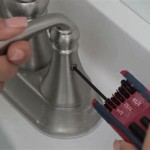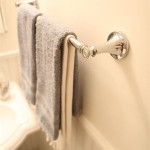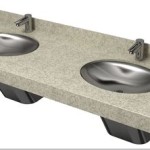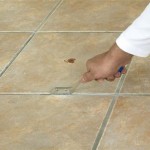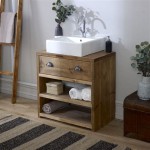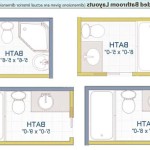Understanding the Bathroom Vanity Area: Design, Functionality, and Considerations
The bathroom vanity area represents a crucial component of any bathroom design, serving as the primary point for personal hygiene and often acting as a central aesthetic element. It encompasses the sink, countertop, storage solutions, and surrounding fixtures. Careful consideration of all these elements is paramount in creating a bathroom vanity area that is both functional and aesthetically pleasing.
The purpose of this article is to provide a comprehensive overview of the bathroom vanity area, exploring the key components, design considerations, and practical aspects of selection and installation. This information is intended for homeowners, designers, and contractors seeking a deeper understanding of this vital bathroom element.
Key Component: The Vanity Cabinet
The vanity cabinet forms the core of the vanity area, providing structural support for the sink and countertop while offering essential storage space. Vanity cabinets are available in a wide array of styles, sizes, and materials, each with its own advantages and disadvantages. The selection of a suitable vanity cabinet must take into account not only the available space but also the overall aesthetic of the bathroom and the specific storage requirements of the user.
Cabinet construction materials significantly impact the durability and longevity of the vanity. Solid wood vanities, such as those made from oak or maple, offer superior strength and resistance to moisture damage, provided they are properly sealed and maintained. However, solid wood vanities tend to be more expensive than alternatives. Plywood, particularly marine-grade plywood, represents a durable and water-resistant option that is often less expensive than solid wood. Medium-density fiberboard (MDF) is a common choice for vanity cabinets due to its affordability and smooth surface, which is ideal for painting or laminating. However, MDF is susceptible to water damage and should be avoided in high-humidity environments or areas prone to flooding.
Vanity cabinets are available in various configurations, including freestanding, wall-mounted (floating), and corner designs. Freestanding vanities are the most common type, offering a traditional look and ample storage. They sit directly on the floor and are typically easy to install. Wall-mounted vanities create a more modern and open appearance, as they are suspended off the floor. This design facilitates easier cleaning and can make a small bathroom feel larger. Corner vanities are designed to fit snugly into a corner, maximizing space utilization in bathrooms with limited square footage.
Storage options within the vanity cabinet are equally important. Drawers offer convenient access to smaller items, such as toiletries and makeup. Shelves provide storage for larger items, such as towels and cleaning supplies. Some vanity cabinets incorporate a combination of drawers and shelves to optimize storage versatility. The internal layout of the vanity should be carefully considered to ensure that it meets the specific storage needs of the user.
Key Component: The Countertop and Sink
The countertop provides a durable and aesthetically pleasing surface for the vanity area. It serves as a platform for the sink and offers a space for placing toiletries and other essential items. The selection of a countertop material should consider factors such as durability, water resistance, stain resistance, and aesthetic appeal. Similarly, the choice of sink style significantly impacts both the functionality and the overall design of the vanity area.
Common countertop materials include granite, marble, quartz, solid surface, laminate, and tile. Granite countertops are known for their durability, heat resistance, and unique natural patterns. However, granite requires periodic sealing to prevent staining. Marble countertops offer a luxurious aesthetic, but they are more porous than granite and prone to scratching and staining. Quartz countertops are engineered from crushed quartz and resin, making them highly durable, stain-resistant, and low-maintenance. Solid surface countertops, such as Corian, are non-porous and seamless, offering excellent stain resistance and repairability. Laminate countertops are an affordable option that are available in a wide range of colors and patterns, but they are less durable than other materials. Tile countertops offer a customizable look but can be difficult to clean due to the grout lines.
Bathroom sinks are available in a variety of styles, including undermount, top-mount (drop-in), vessel, pedestal, and wall-mounted. Undermount sinks are installed beneath the countertop, creating a seamless and easy-to-clean surface. Top-mount sinks are installed from above the countertop, with the rim of the sink sitting on top of the surface. Vessel sinks are mounted on top of the countertop, creating a unique and contemporary look. Pedestal sinks are freestanding sinks that are supported by a pedestal base. Wall-mounted sinks are attached directly to the wall, freeing up floor space and creating a minimalist aesthetic. The choice of sink style should be based on personal preference, the overall design of the bathroom, and the available space.
Consideration should also be given to the faucet selection. The faucet should complement the style of the sink and the overall aesthetic of the bathroom. Faucets are available in a variety of styles, finishes, and configurations, including single-handle, double-handle, and widespread designs. The faucet should also be compatible with the sink's hole configuration.
Key Component: Lighting and Mirrors
Adequate lighting is essential for any bathroom vanity area, providing illumination for tasks such as shaving, applying makeup, and personal grooming. The mirror is another integral part of the vanity, reflecting light and providing a visual aid. The placement and selection of lighting fixtures and mirrors significantly impact the functionality and aesthetic appeal of the vanity area.
Lighting fixtures should be positioned to provide even and shadow-free illumination. Vanity lights are typically mounted above or on either side of the mirror. Sconces, which are wall-mounted lights, are a popular choice for vanity lighting, as they provide direct and focused illumination. Overhead lighting, such as recessed lights or a ceiling fixture, can provide ambient lighting for the entire bathroom, complementing the vanity lighting. The color temperature of the light bulbs should also be considered. Warm white light (2700-3000K) creates a cozy and inviting atmosphere, while cool white light (3500-4100K) provides brighter and more focused illumination, which is ideal for tasks such as shaving and applying makeup. LED lighting is an energy-efficient and long-lasting option for bathroom vanity lighting.
Mirrors are available in a variety of shapes and sizes, including rectangular, oval, round, and square. The size of the mirror should be proportional to the size of the vanity and the overall dimensions of the bathroom. Framed mirrors add a decorative touch and can complement the style of the vanity cabinet. Frameless mirrors offer a clean and minimalist look. Some mirrors incorporate built-in lighting, providing convenient and focused illumination. Medicine cabinets, which combine a mirror with storage space, are a practical option for smaller bathrooms.
The placement of the mirror is also important. The mirror should be positioned at a comfortable height for the user, allowing for a clear and unobstructed view. The mirror should also be placed in a location that maximizes natural light and reflects the overall design of the bathroom.
Beyond these core components, several additional considerations contribute to the overall functionality and aesthetic of the bathroom vanity area. These include ventilation, plumbing, electrical wiring, and accessibility.
Proper ventilation is essential for preventing moisture buildup and mold growth in the bathroom. A bathroom exhaust fan should be installed to remove excess moisture and humidity. The fan should be properly sized for the size of the bathroom and should be vented to the outside.
Plumbing considerations include the location of the water supply lines and the drainpipe. The plumbing should be properly installed and connected to the sink and faucet. The drainpipe should be properly sloped to ensure proper drainage.
Electrical wiring considerations include the location of the electrical outlets and the wiring for the lighting fixtures. All electrical wiring should be performed by a qualified electrician and should comply with all local electrical codes.
Accessibility considerations are important for individuals with disabilities or limited mobility. The vanity should be designed to be accessible to all users, with features such as grab bars, accessible sinks, and adjustable-height countertops.
The careful selection and installation of each component within the bathroom vanity area is paramount. By considering the cabinet, countertop, sink, lighting, and mirror, along with ventilation, plumbing, electrical considerations and accessibility, a bathroom vanity area can be created that is both functional and aesthetically pleasing.
:max_bytes(150000):strip_icc()/cathie-hong-interiors-makeup-vanity-1-8cad7437c9f1429a9fb63728c6d9fa68.jpeg?strip=all)
20 Makeup Vanity Ideas That Make Getting Ready Feel Like A Treat

Makeup Vanity Dressing Table

11 Stylish Makeup Vanity Ideas Table Organization Tips

Modern Bathroom Vanity Design Regalo Kitchens

Bathroom Vanity With Seating Area Room Ideas Trendy

25 Most Inspiring Bathroom Vanity With Seating Area Ideas To Try Remodel Master Closet Design
:max_bytes(150000):strip_icc()/erin-williamson-design-makeup-vanity-1-11259042beaf47939c7fe92416e29782.jpeg?strip=all)
20 Makeup Vanity Ideas That Make Getting Ready Feel Like A Treat
Bathroom Vanity Ideas 20 For A Stand Out Area

Pin On Bathroom Inspiration

Popular Bathroom Vanity Designs Types Beautiful Homes
Related Posts
